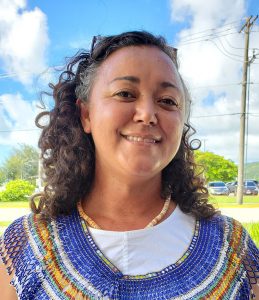CW-1 survey data needed to fill gaps in CNMI workforce
With an impending temporary loss of what’s expected to be a large chunk of the CNMI’s workforce, the CNMI Department of Labor is urging the business community to take part in its ongoing CW-1 survey that’s meant to measure the impact of the looming implementation of the “touchback” provision.
So far, as of yesterday, nearly 20 businesses have already responded to the CW-1 assessment survey, which was launched last week, according to CNMI Labor Secretary Leila Staffler.
Although she thinks the number is a good start, Staffler is urging more CNMI businesses who employ foreign workers to fill out the survey to give DOL an idea of how it can fill in the gaps in the CNMI workforce once the “touchback” provision is enforced in September.
Touchback refers to the requirement for foreign workers to leave the CNMI before their work visas could be renewed for a third consecutive time. That departure requirement also means they will have to stay away until a new permit is approved, which could take months.
“The survey is intended for any business owner who employs CWs or other visa type workers, because we’re interested in understanding how many visa type workers are out there. That’s information we don’t actually collect. So this is our effort to communicate with businesses directly so that we can understand how this new touchback policy affects them. It will also help us see how we can improve or increase our services as a Department of Labor to help the gaps with U.S. workers, if at all possible,” she said.
Staffler said DOL wants to help fill these gaps with U.S. workers so DOL encourages as many businesses as possible to take part in the survey in the next four weeks so that DOL can respond to their labor needs.
“I don’t have a closing date just yet, but any data that we collect will really help us decide what our next steps will be. I would ideally like as many responses as I can get in the next two to four weeks. It’s already June. When I look at the data submissions so far, I can see that September is going to be a huge area of need because many of the renewal dates are in the month of September. That means a lot of workforce gaps will be happening in September. Knowing exactly how many [will be affected] will help us plan a job fair in August because July is next month and we need to move already,” she said.
Fortunately, Staffler said, the CNMI has good training programs and facilities on island that are able to train locals to perform specific trade skills that have needed to be outsourced through foreign workers who may now have to leave due to the new touchback provision.
“We do see there’s a gap with transition of workers between getting training and actually getting placed in jobs so we want to help bridge those gaps. We definitely have good systems here in the CNMI that do the training and we want to help people…get placed in jobs that would otherwise go to someone else who isn’t able to stay because they have to leave,” Staffler said.
Overall, Staffler said, the survey is important in balancing DOL’s responsibility of enforcing laws regarding workforce preference for U.S. workers, while also collecting data that would paint a clearer picture of how much the CNMI still needs foreign workers, like those under the CW-1 visa program, to bridge the gap in its workforce.
“DOL is tasked with enforcing the laws that all should revolve around workforce preference for U.S. citizens and so, in a sense, we have to be able to balance that responsibility. So it’s hard for us to answer the questions about non-citizens when we don’t actually have that information,” she said.
“People with economic interest wanted to know this data and we do not actually know this data. This is beyond the scope of what DOL for the CNMI is enabled to do because all CW applications are approved outside of our system so that information is not actually directly shared with us,” Staffler added.
Ultimately, Staffler said, DOL just wants to help keep the CNMI afloat during these times.
“We don’t have control over this law and only Congress can change any of those provisions, so we just want to be able to react in an appropriate way to maintain our workforce needs for our businesses and hopefully keep our economy afloat. We created this survey because there were so many people in the community asking DOL about this data because the economy relies on this type of changes,” she said.




























